
Greetings Friends, This monthly newsletter (No. 58) includes: City of Darwin motions, DHA update, top 10 spots, quiz, plants and wildlife.
1.0 City of Darwin motions on Lee Point
Councillor Julie Fraser intends to move a series of motions involving Lee Point at the next council meeting. The motions include not accepting further subdivisions at Lee Point from Defence Housing Australia.
Please sign this PETITION to City of Darwin
And
support Save Lee Point by attending the council meeting – 5pm Tuesday 28 Oct at Council Chambers, Civic Centre, Darwin
Check Friends of Facebook or Save Lee Point website for updates.
2.0 Defence Housing Australia (DHA) update
Offset policy ignored in the Darwin Wildlife Corridor at Lee Point – DHA have cleared critical habitat used by the endangered Black-footed Tree-rat (BFTR) without considering reasonable avoidance measures. This is against government offset policy.
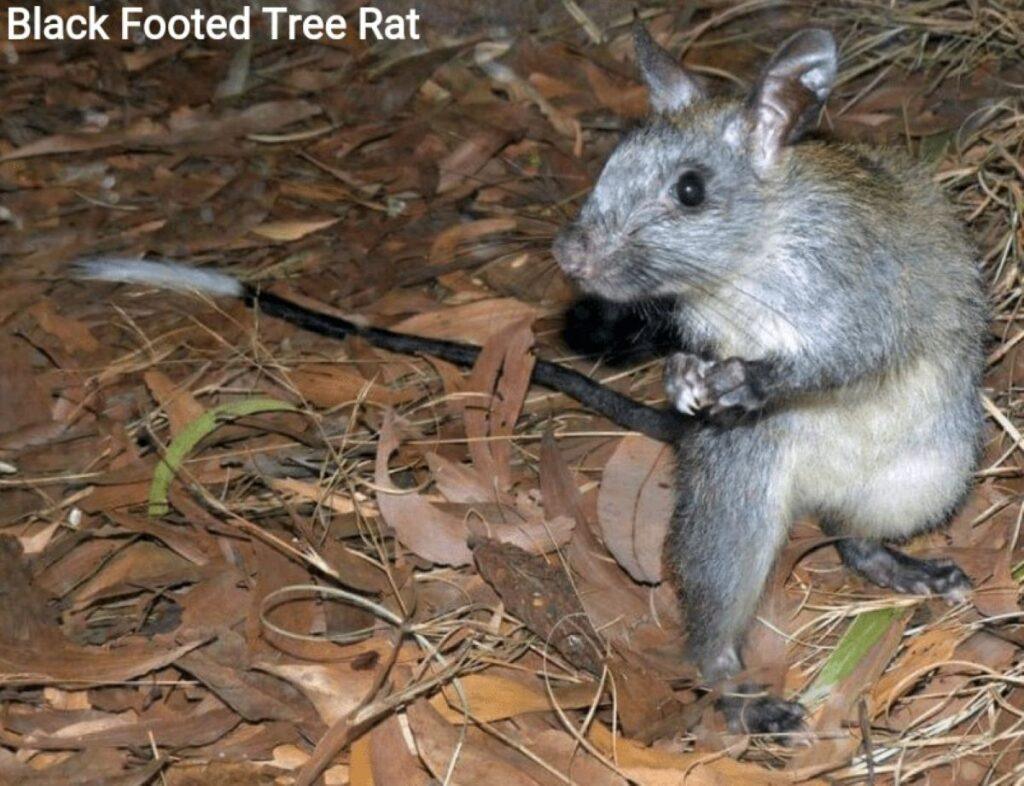
Fig 1. Black-footed Tree-rats are now endangered due to declining numbers and habitat.
The DHA housing project commenced at Lee Point four years ago. According to documents on the DHA Lee Point website, DHA is looking for a 40ha offset so it can clear more BFTR habitat in the Darwin Wildlife Corridor at Lee Point. FLP believes this approach is irresponsible and alternative locations should be used.
FLP have written to the Australian Government seeking confirmation that an independent evaluation of alternative housing locations will be carried out before any BFTR offset is implemented.
Mulching work finishes on Stage 2 – It was a relief to find the heavy machinery mulching the woodpiles had left site early September and work had halted again.
Gamba Grass – the biggest threat (after the DHA bulldozers) to the Lee Point woodland habitat is Gamba Grass. The DHA project site has extensive outbreaks of Gamba Grass. FLP recently provided this Gamba Report to the NT Government to prompt further action on reducing Gamba Grass on the Lee Point peninsula.
Unjustifiable cost of defence houses at Lee Point. Defence needs 200 houses/lots. It is unacceptable to be threatening endangered species in order to create (500 plus) high priced lots for investors and 200 defence lots/houses when alternative locations are available.
Relocating and rescoping the Lee Point defence housing project highlights the problems with housing people at Lee Point and the benefits of relocating the project.
3.0 Other news

Fig 2. Dr Jane Goodall with Senator Sarah Hanson-Young in 2024
Dr Jane Goodall, the renowned conservationist and pioneer of groundbreaking chimpanzee field research has died at the age of 91. She described the destruction of the old-growth forest at Lee Point/Binybara “…as simply unacceptable”. Her memory will live on.
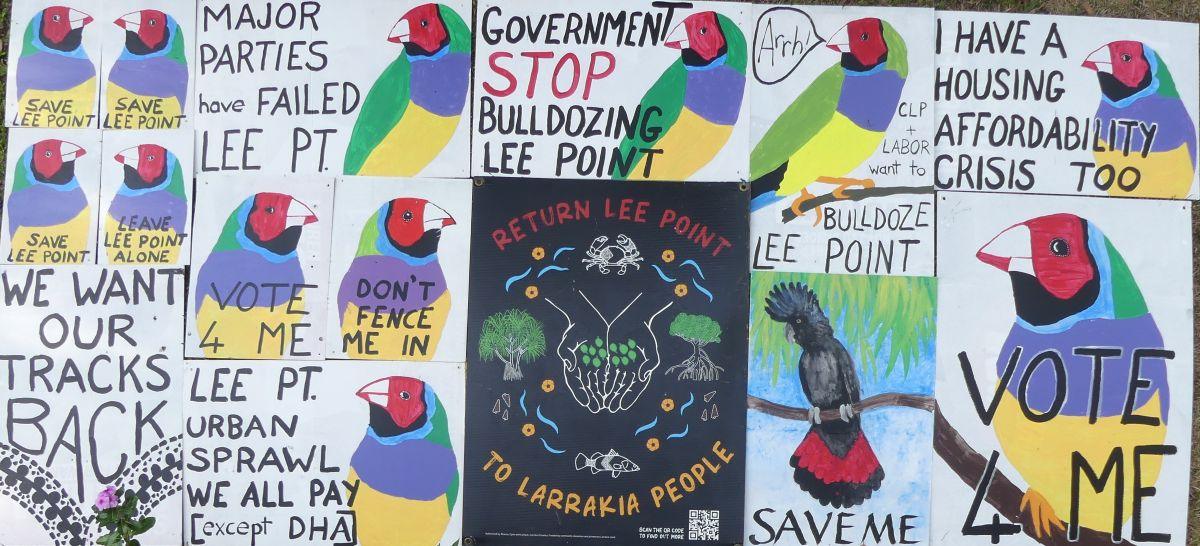
Fig 3. Artwork from the Save Lee Point campaign
Sanctuary Summit Art Exhibition – FLP and other Save Lee Point groups are taking part in this exhibition which includes international, interstate and local artists. Exhibition opens 6pm Thursday 9 Oct 2025 at the Northern Centre for Contemporary Arts in Parap and runs to 15 Nov 2025.
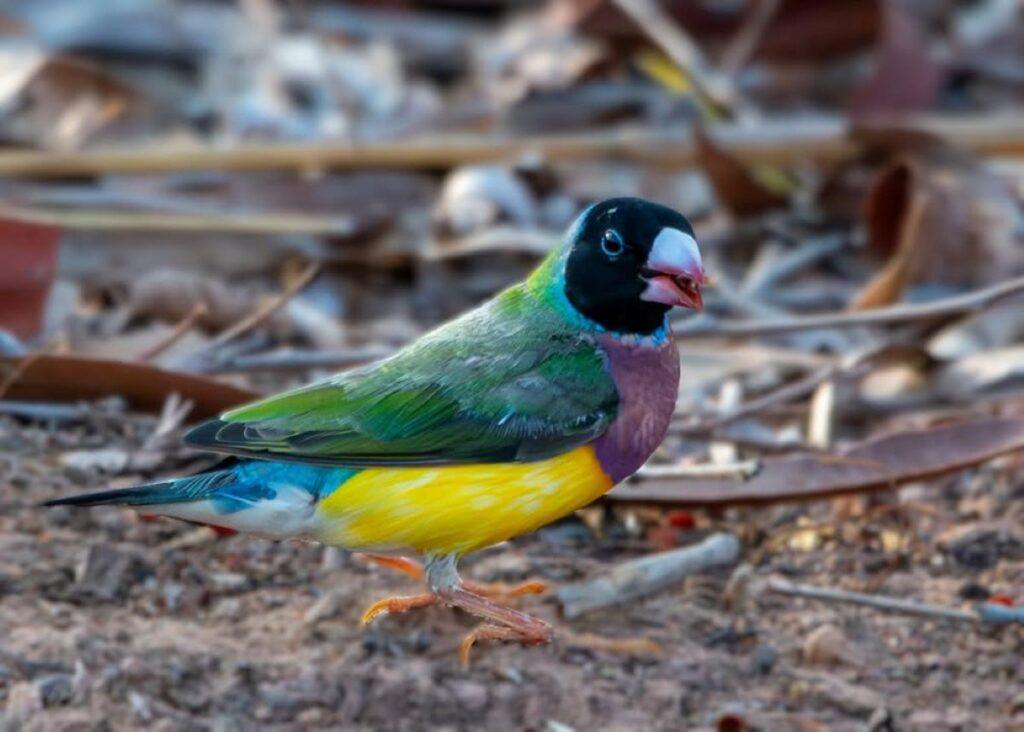
Fig 4. Gouldian Finch at Lee Point – photo Matt Campbell 16 Sept 2025
10 National Stand-out Spots – Lee Point/Binybara was listed in the top 10 places in Australia to see rare and remarkable species. The Gouldian Finch was one of the species that helped Lee Point make the list.
Migratory shorebirds return to Darwin
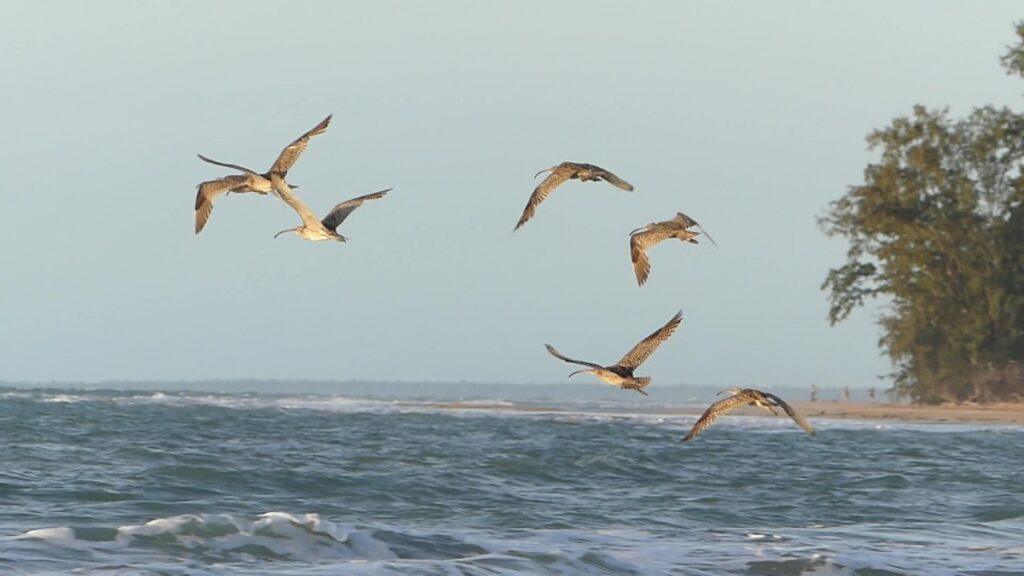
Fig 5. Critically endangered Far Eastern Curlews at Lee Point – 9 Sept 2025
Migratory shorebirds started arriving early September from places like Siberia, ~10,000km away from Lee Point. Lee Point is the most important migratory shorebird site in Darwin.
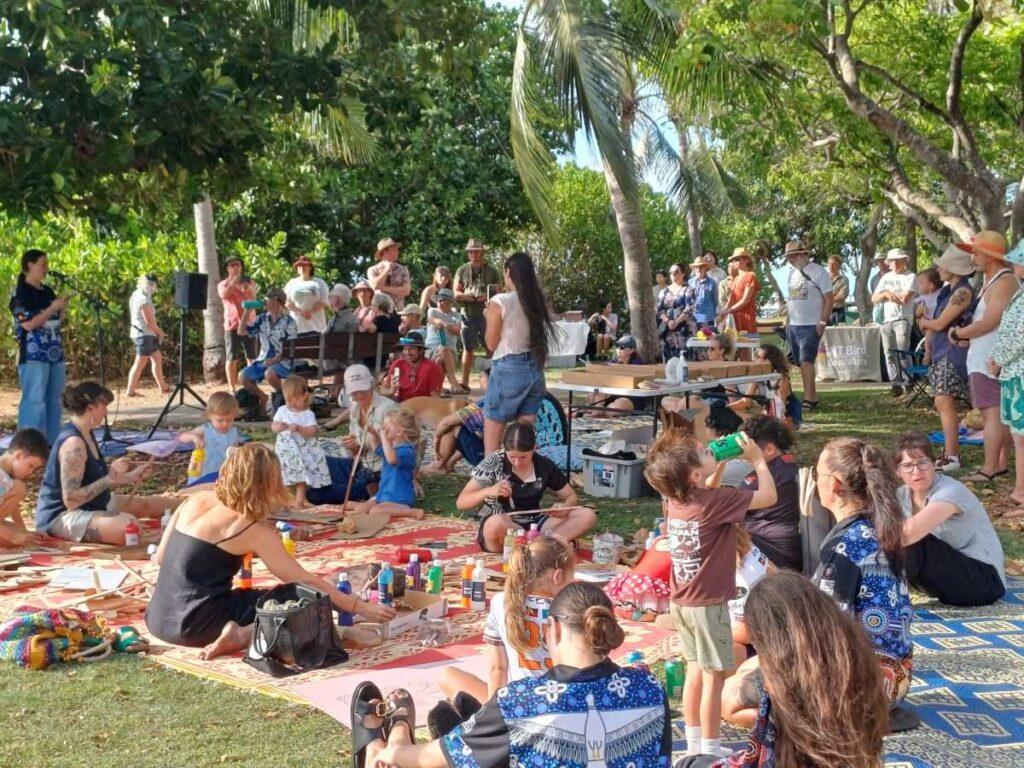
Fig 6. Opening ceremony for shorebird festival at Sunset Park 20 Sept 2025.
The Darwin- Garramilla Shorebird Festival is a community festival held annually at multiple locations around Darwin-Garramilla in September. It is organised by Birdlife Top End.
Aussie bird count is on again. It runs from 20-26 Oct.
Fire – If you see a fire on the Lee Point peninsula it is probably arson, call 000, response time is critical for controlling fires.
4.0 Quiz
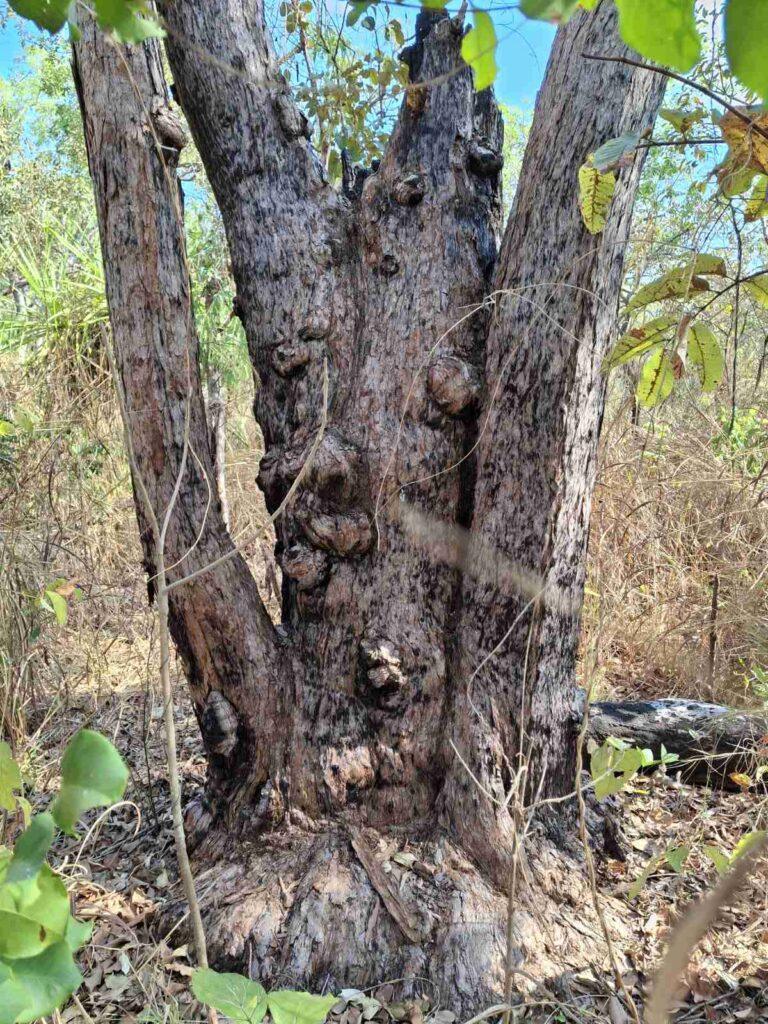
Fig 7. Darwin Stringybark (Eucalyptus tetrodonta)
Many eucalypts have a swelling at the base of the trunk. What is this called and why is it important?
5.0 Plants and Wildlife
The River Mangroves were flowering this month attracting insects.
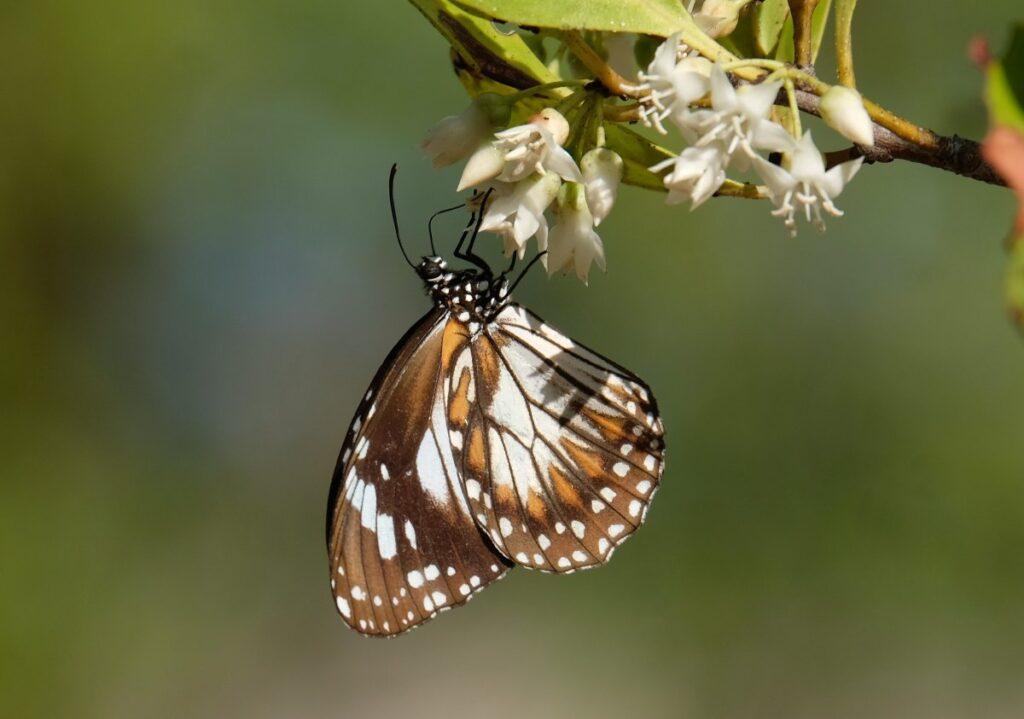
Fig 8. Swamp Tiger Butterfly on River Mangrove
Favourite food: Nectar
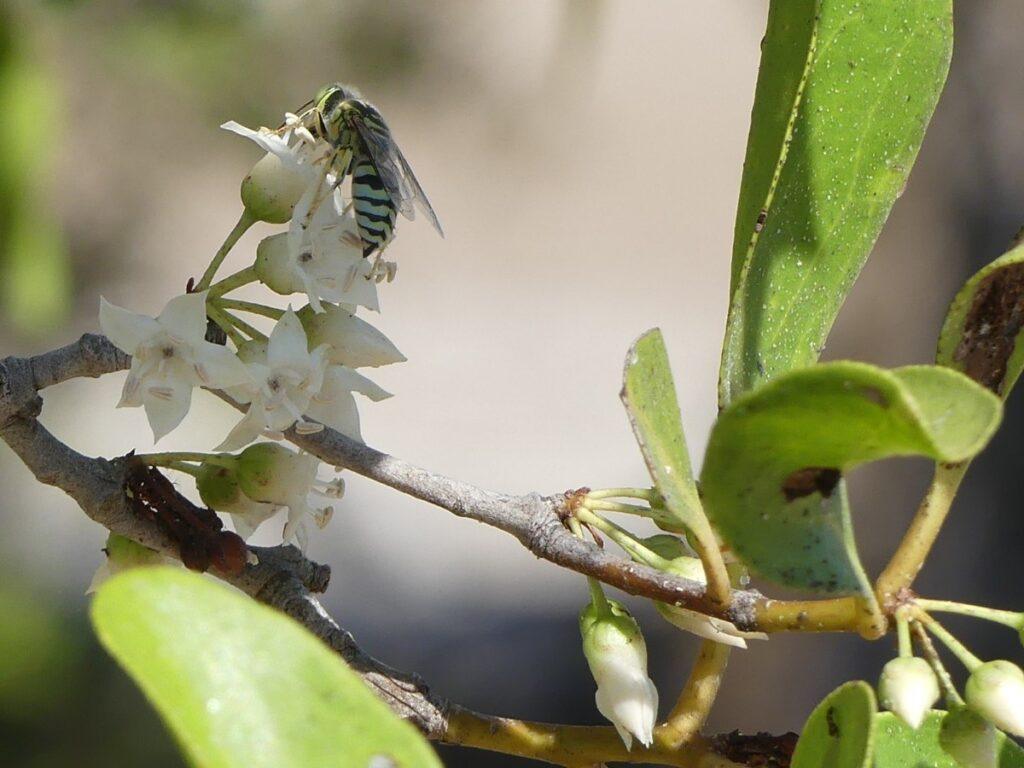
Fig 9. Sand Wasp on River Mangrove
Favourite food: Nectar but captures prey like flies to feed their larvae.
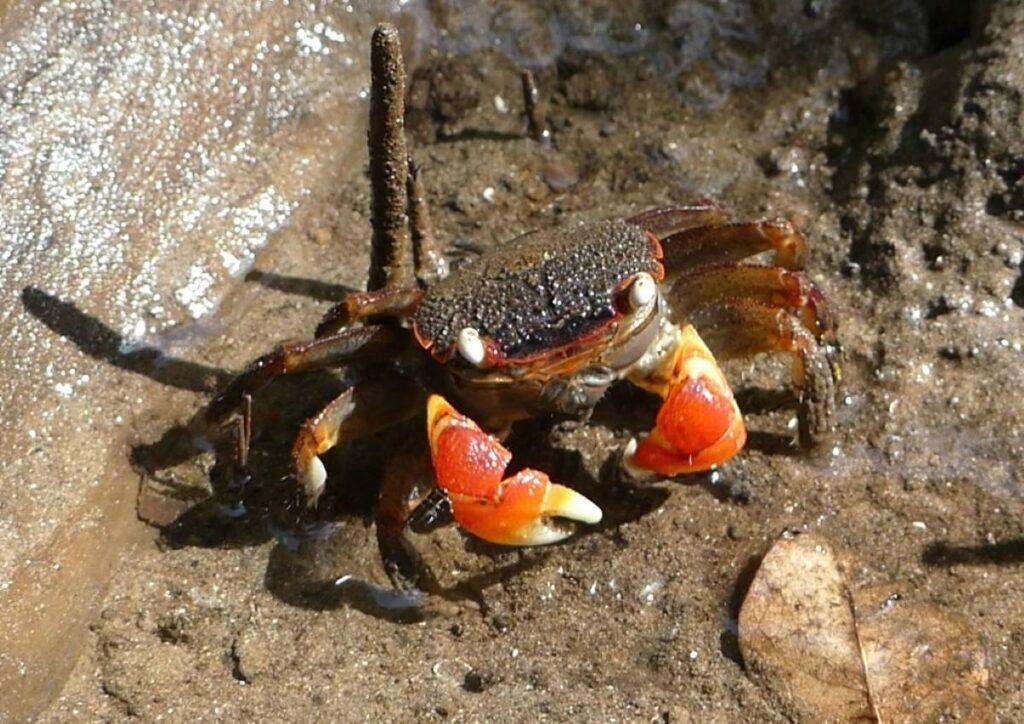
Fig 10. Crab in mangroves – crab is from the family Sesarmidae
Favourite food: Plant and animal matter – eats most things
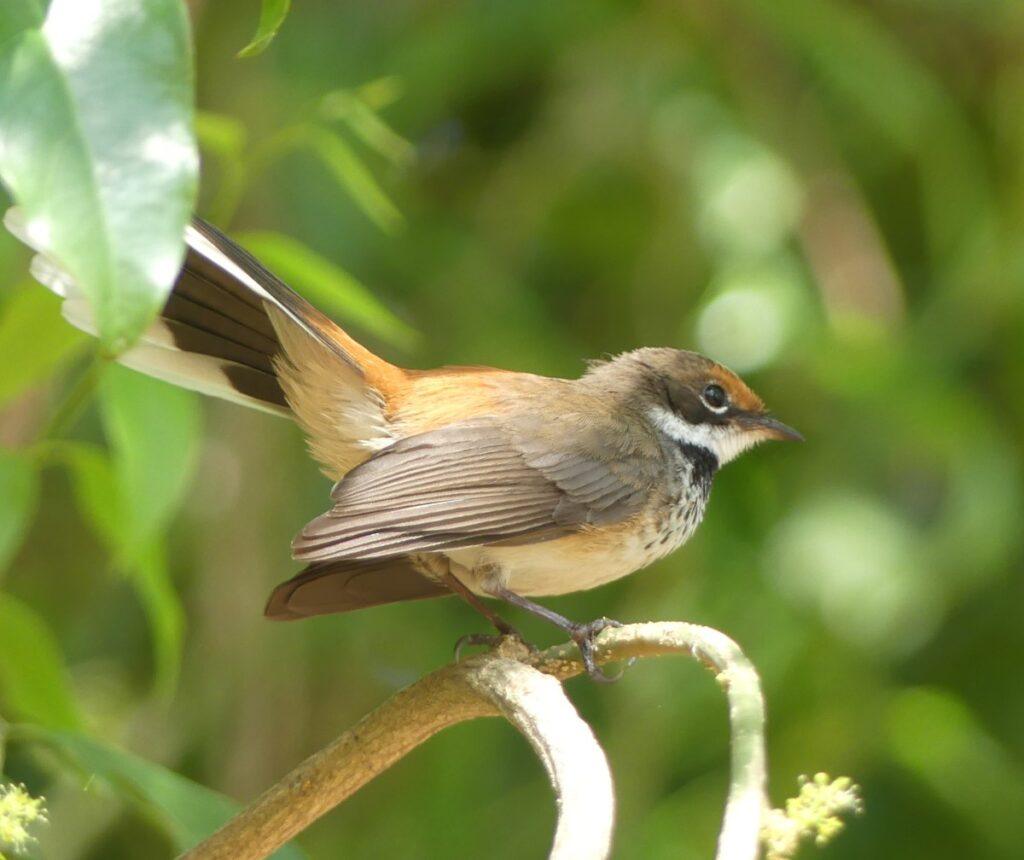
Fig 11. Arafura Fantail
Favourite food: Insects
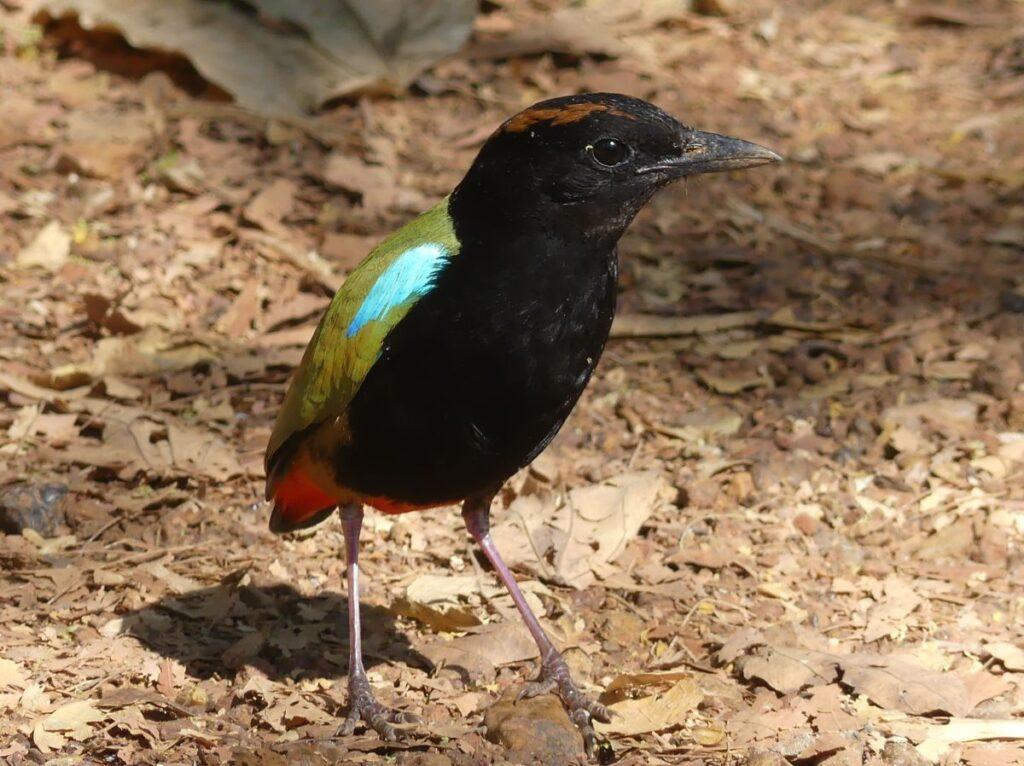
Fig 12. Rainbow Pitta
Favourite food: Mainly insects, earthworms, and small vertebrates
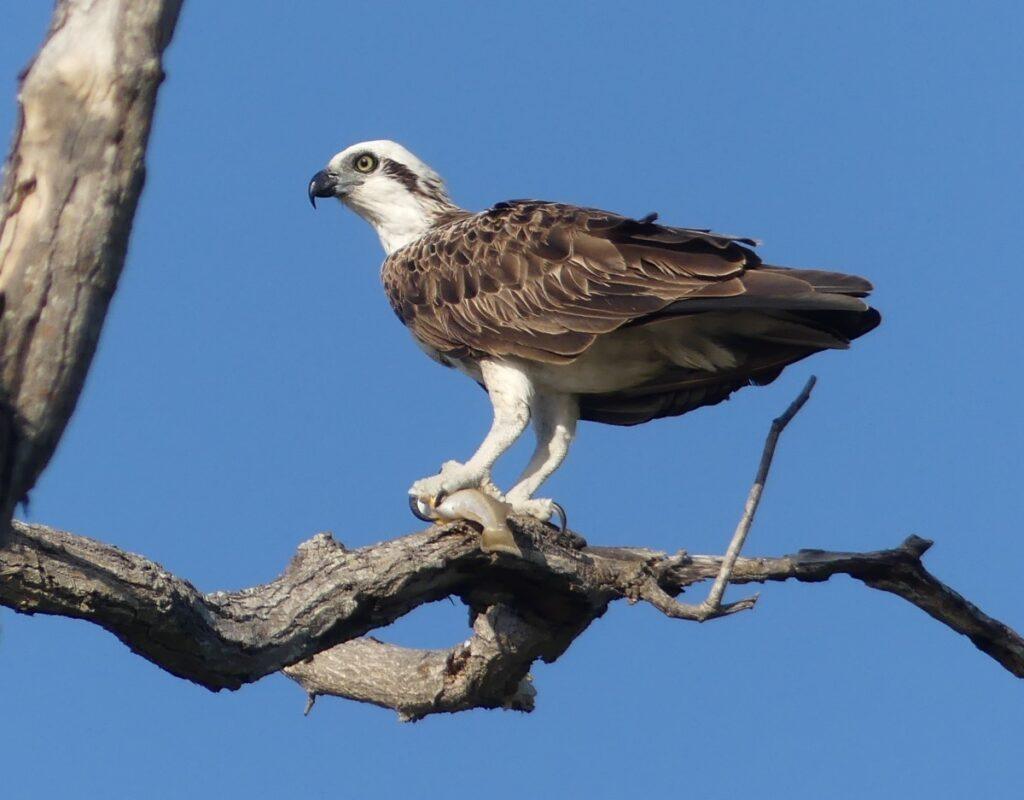
Fig 13. Osprey
Favourite food: Fish
Wilderness Walks
Bird sightings have increased recently with Wilderness Walks recording between 30-50 bird species, refer ebird for latest sightings. Please check Friends of Lee Point Facebook for walk times.